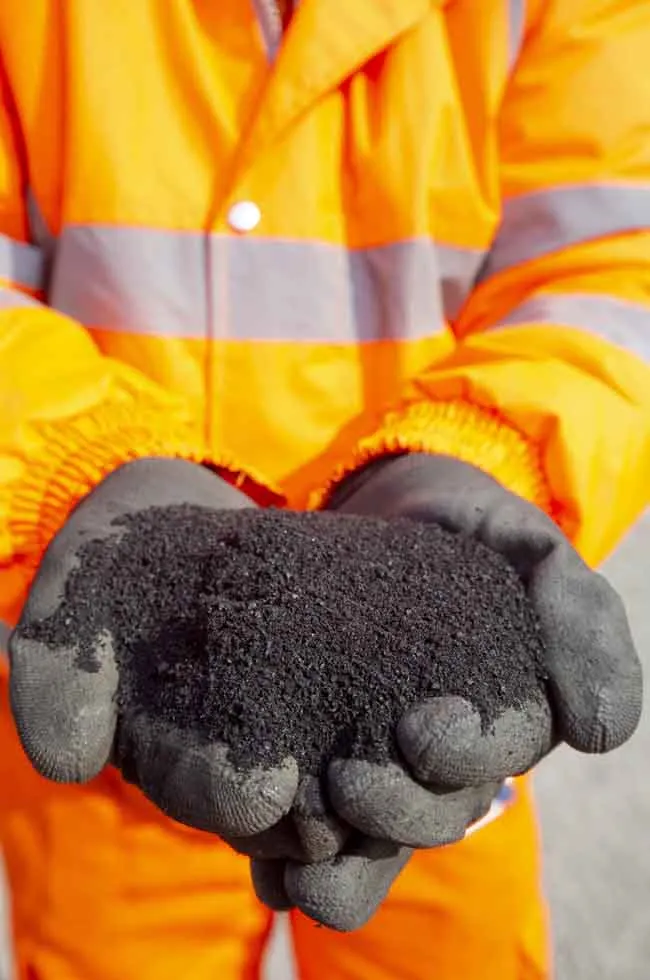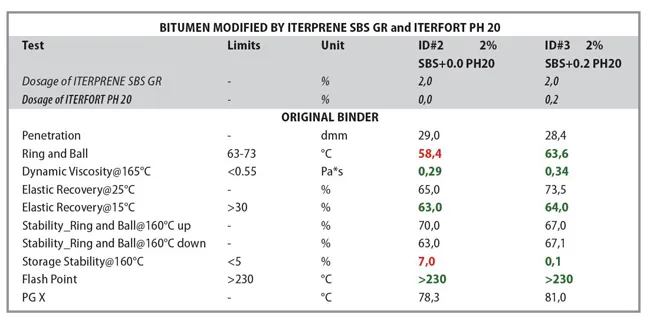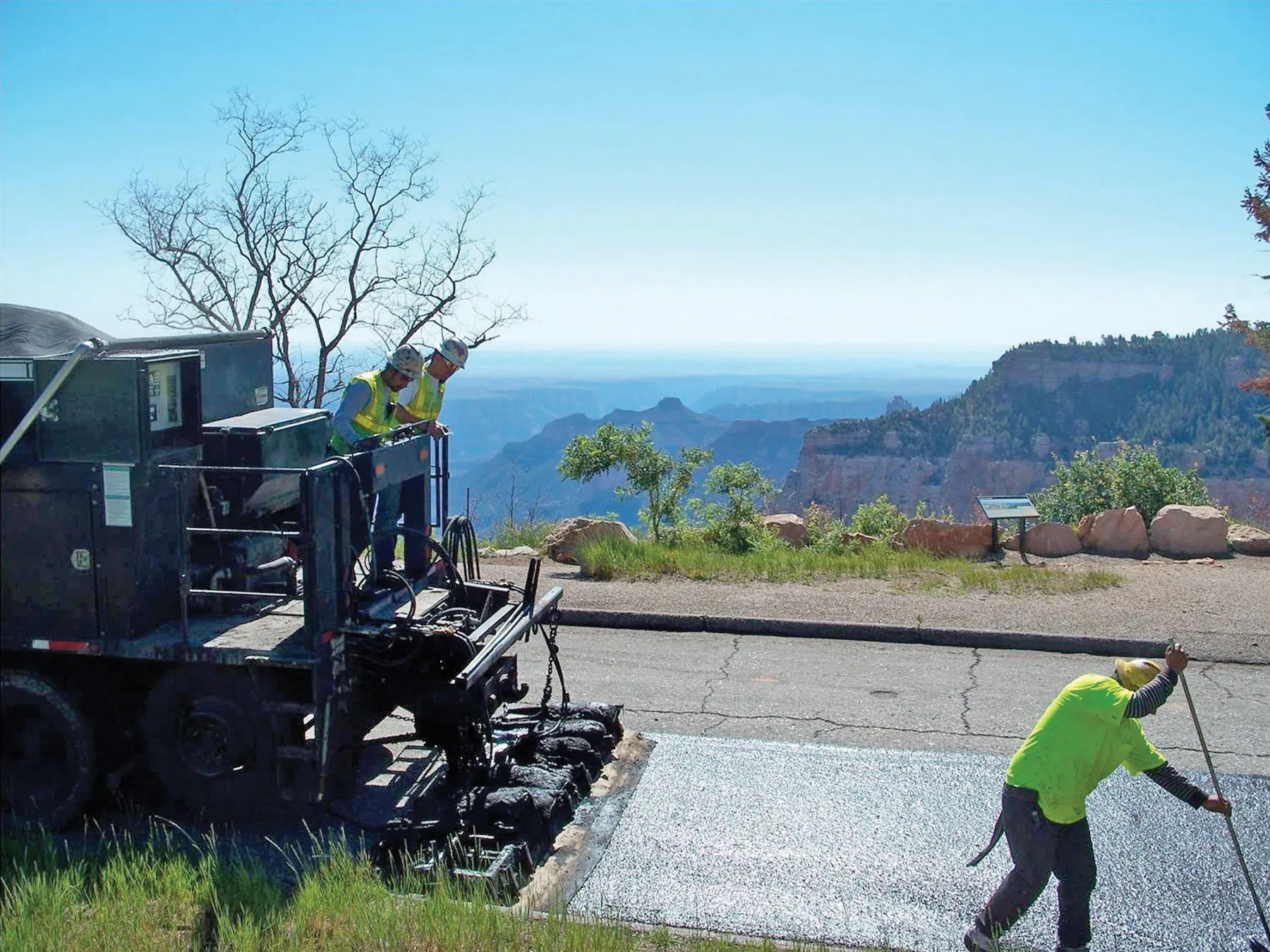
Why durability is crucial for both emerging and developed economies, and how warm mix technology can help disaster recovery - Kristina Smith reports
When CORE Construction, a 100% owned Ghanaian company, started working on road construction projects five years ago, it was difficult to source the right bituminous mixes.“In the past, most construction firms had a number of challenges when it came to bituminous works, since the local capacity was not well-developed,” said CORE CEO Frank Lartey.
CORE’s solution was to start making its own bituminous emulsion products which lead to the launch of its subsidiary Platinum Seal Limited. Now the biggest processing plant in Ghana, Platinum Seal supplies 55% of the bitumen emulsion used in Ghana and plans to export to other African countries.
In addition to producing its own emulsion, CORE Construction has adopted new technologies which have helped it to construct more reliable roads. One such innovation is the Synchronous Chip Sealer which sprays and spreads bitumen and chippings simultaneously from one machine.
Another new technology for Ghana is ‘tack seal’, where a bigger aggregate is applied first, followed immediately by a smaller aggregate. “Tack seal is a form of sealing which converts the surface of the bitumen into a structural member,” explained Lartey. “This makes the road more durable, and more cost effective.”
In order to create the tack seal layer, a PMB emulsion is required. “With PMB we are able to raise the flash point so that the pavement does not bleed,” said Lartey. The tack seal technique also means that none of the larger aggregate is lost since it is covered immediately by the smaller aggregate.
Platimun Seal creates the PMB emulsion using
“The pressurised emulsion plant from Denimotech has contributed to the success of our emulsion on the market,” said Lartey. “We are able to transport emulsion products to distances over 500km without having separation problems.”
Road projects in Ghana can be challenging. One of CORE’s current projects is the reconstruction of 19km of main road between Ashaiman and Zenu which carries heavy vehicles from the port to an industrial area. Traffic is continually using the road during construction.
“We stop the cars for a few minutes while the equipment is working, but the bitumen has to take the traffic on the same day,” said Lartey. Maximum compaction and the tack seal coat help prevent the road from being damaged immediately.
Currently Platinum Seal, working with DuPont, is selling PMB emulsion at the same price as standard bitumen emulsion. “We are managing it at the same cost, letting go of some of our profit,” said Lartey.
However, the use of Tack Seal reduces maintenance costs which benefits contractors. Normally in Ghana, a contractor would have to return during the one-year maintenance period to carry out repairs. “With this technology, we don’t need to go back to do that,” said Lartey.
Meanwhile in the UK, a 3.8km section of the M90, just north of the Forth Road Bridge, has become the first stretch of motorway to benefit from a new specification aimed to improve the durability of SMA thin surfacing. The specification, TS2010, involves a four-stage approval process, the final one coming two years into a road’s service life.
Developed from German standards, TS2010 requires gap graded aggregates, very high performance polymer modified bitumen and gritting of the final surface. For this
Nynas’ Scottish area sales manager Nigel Hardy said, “This material is a highly polymer modified elastomeric binder with exceptional resistance to permanent deformation and cracking. These characteristics mean it is well suited to the kind of durable asphalt that TS2010 is intended to produce.”
The specification’s four-stage type approval installation trial (TAIT) starts with the design phase, and is followed with a plant trial where the material is laid and destructive and none-destructive tests carried out. Stage three sees the design mix laid on the carriageway of a live road, and the final stage sees a final phase of testing after two years of live testing.
Nynas also supplied the binder to go into the EME2 asphalt for the ITS contract, Nypave FX 20. EME2 (Enrobé à Module Élevé) is high strength, long life asphalt used for the base and binder courses. Nynas developed Nypave FX 20 for use in high modulus asphalts such as EME2.
Breedon Aggregates Scotland carried out the surfacing work, as subcontractor to principle contractor
The other elements of the Forth Replacement Crossing are the £790 million New Forth Road Bridge and connecting roads which JV contractor Forth Crossing Bridge Constructors (
Warm mix role
Warm mix asphalt could have an important role to play in aiding disaster recovery after hurricanes or flooding events according to an independent study led by Mississippi for the US Department of Homeland Security. And the researchers identified one brand of warm mix technology – Evotherm 3G – which would be suitable for haul times of over 10 hours.
The report, authored by Professor Isaac Howard, said, “Evotherm 3G modified asphalt was the only product the research team felt comfortable taking to 10 hr (+) haul times. Its compaction ability at these haul times was fairly remarkable, especially considering it was not different than traditional hot mixed asphalt at conventional haul times.”
“Evotherm holds up longer than foamed asphalts because it has been chemically engineered to do the job,” said Heather Dolan, asphalt commercialisation manager for MWV’s specialty chemicals division. “At the colder temperatures, or longer hails, foamed technologies tend to struggle.
The researchers at Mississippi State University carried out full-scale tests using hot mixed asphalt, foamed asphalt and Evotherm 3G modified asphalt. All the mixes were heated to 160°C in a full-scale facility and hauled in trucks between 1 and 10.5 hours before being compacted to 6.8-11.6% air voids based on AASHTO T166.
The laid asphalt was then tested on workability, binder grading, wheel tracking, and moisture damage. The target service life for temporary repairs is 60 days in a warm and wet environment. Up to the eight hour mark, researchers found no difference in performance between any of the mix types.
Re-paving roads after natural disasters can be vital in order to get aid into areas and to reconnect them commercially. And since roads may be blocked or damaged, asphalt trucks may take longer than normal to reach their destinations.
While warm mix asphalt is most often used because it can be made at lower temperatures, conserving fuel and limiting carbon emissions, it can also be heated up to conventional hot mix temperatures and hauled for longer distances, or used in lower temperature climates.
The report recommends that States identify asphalt plants that would be willing and able to respond in an emergency situation, making financial agreements in advance. The report says: “Key asphalt plants could be placed on alert if a somewhat predictable event such as a hurricane were likely to hit an area close enough they could respond. Proper planning could allow emergency paving to begin hours after the disaster event ceased, which is considerably faster than any process in effect in present day.”
RSS









